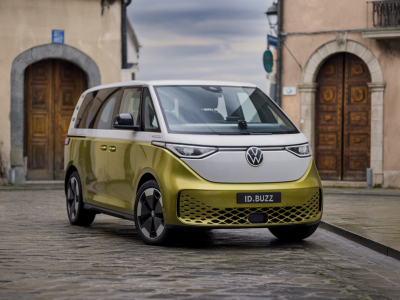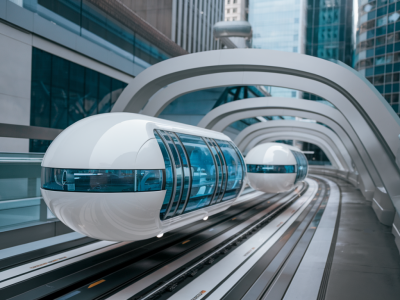
In recent months, a quiet revolution has been rolling out in select city centers, mostly unnoticed by the masses. And yet, if you’ve passed a new IKEA pickup point squeezed between cafés and coworking spaces, you might have already seen it in action — IKEA’s urban micromobility hubs. When I first learned about these modular, last-mile focused delivery points, I couldn’t help but ask: are these the missing link in city logistics we’ve been waiting for?
As someone deeply invested in the evolution of transportation and city planning, I find IKEA’s approach refreshingly strategic. It’s not just about selling furniture anymore — it’s about rethinking how goods, services, and people flow within dense urban environments. And their latest micromobility experiment might just be a blueprint for future city logistics frameworks.
The growing last-mile challenge in urban logistics
Let’s face it — cities weren’t designed for the logistics chaos we're currently witnessing. From surging online shopping habits to increasing same-day delivery demands, urban centers are struggling. Traffic congestion, air pollution, logistical inefficiencies… these are daily realities in places like Paris, London, New York, and Berlin. The so-called “last mile” of delivery contributes disproportionately to these issues, making it one of the most complex and costly segments of supply chains.
What do we really need? Space-saving, low-emission, and smart delivery solutions that ease the pressure on inner-city transport networks — without compromising on customer convenience. That’s where IKEA’s urban micromobility hubs come in as a fascinating case study.
What exactly are IKEA's micromobility hubs?
Since 2022, IKEA has been rolling out small, strategically placed micromobility hubs across several European cities. These hubs act as decentralized logistics centers — not massive warehouses, but nimble, modular pickup and delivery stations embedded within cities. The idea is simple yet powerful: bring the goods closer to the customer, reduce delivery distances, and use smaller, cleaner modes of transport to make the final trip.
In Paris, for example, IKEA has partnered with environmentally friendly logistics start-up Box2Home to offer electric bike deliveries for orders originating from its city-center hub. In London, the company invested in its Greenwich store to kick-start emissions-free deliveries using cargo bikes and electric vans, and has since opened additional micro-distribution sites around the city. These hubs are not only facilitating more sustainable deliveries — they’re also reducing street congestion and freeing up large delivery trucks from having to navigate narrow urban roads.
Why this matters for the future of micromobility
I see IKEA’s initiative as part of a much broader narrative: the integration of micromobility into mainstream logistics planning. For years now, we’ve talked about e-scooters, e-bikes, and cargo bikes as “last-mile personal transport.” But when we apply the same logic to freight, the scalability potential becomes much more compelling.
Think of it like this — micromobility isn’t just about how people move, but how things move too. Electric cargo bikes, for example, can maneuver tighter spaces, require no special licenses, and contribute virtually zero emissions. When you layer in real-time delivery tracking and smart routing software, as many of these hubs now do, you get a logistics apparatus that’s lean, responsive, and eco-minded.
This is precisely the kind of innovation cities need to meet growing demand while sticking to ambitious environmental goals. Cities like Amsterdam, Oslo, and Milan have already started shaping policies that restrict CO2 emissions in city centers — having last-mile partners that comply via micromobility makes complying much easier.
What IKEA gets right — and what others can learn
Here’s where IKEA's instinct really impressed me. They didn't simply retrofit an old solution. Instead, they built something new from the ground up, tailored specifically to dense urban ecosystems. That meant investing in:
- Hyper-local delivery models: Hubs are located within a few kilometers of customers, drastically cutting travel time and emissions.
- Cargo bike partnerships: Companies like DOCKR and Bugee ensure the mobility aspect is agile and scalable.
- Digital-first logistics: IKEA has smart backend systems that link online orders directly to the closest urban hub and dispatch cleaner delivery options automatically.
But more than the logistics tech, what IKEA sets an example in is mindset. They’re not just asking, "How can we deliver faster?" but rather, "How can we deliver smarter — for cities, for the environment, and for people?"
Challenges and considerations
That said, not everything is frictionless. These hubs require nuanced coordination with local governments, especially around land use and traffic regulations. There's also the challenge of scaling — while electric cargo bikes work excellently for smaller items, anyone who’s ordered a Pax wardrobe knows that not all deliveries fit in bike trailers (yet).
Then there’s the issue of curbside management. With more deliveries happening at street level, we’ll need smarter urban infrastructure — loading zones designed for micromobility, priority lanes for electric deliveries, and maybe even drop-off lockers integrated into community spaces.
Still, I believe these are solvable problems. And it’s heartening to see a company like IKEA willing to experiment where others hesitate.
What’s next for IKEA and urban transport?
According to their 2023 sustainability report, IKEA aims for 100% zero-emission home deliveries by 2025. That’s barely a year away. The company is also working with other delivery specialists like Zedify and URB-E to fine-tune its micromobility logistics ecosystem. Their vision isn't just about fixing delivery — it’s about reshaping it for modern cities that are smarter, greener, and better connected.
It’s a powerful reminder that logistics doesn’t have to be a burden on our cities. With creativity, partnership, and a willingness to rethink traditional systems, it can become a force for good. IKEA’s micromobility hubs aren’t just about beds and bookshelves — they’re quietly giving shape to what the future of urban living could look like.
And for all of us passionate about sustainable transport and smarter cities, that’s something to get excited about.

